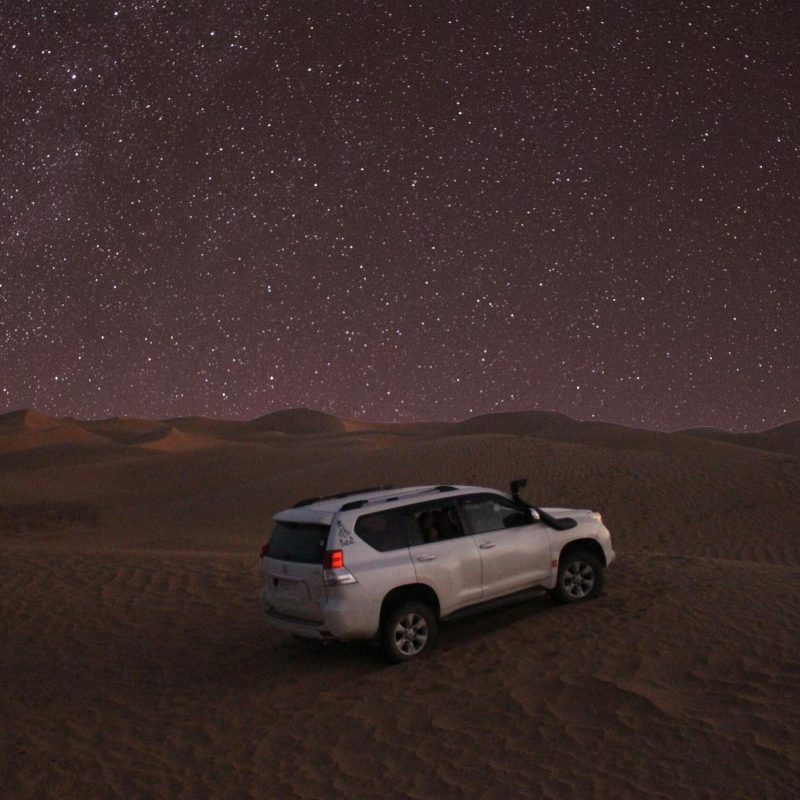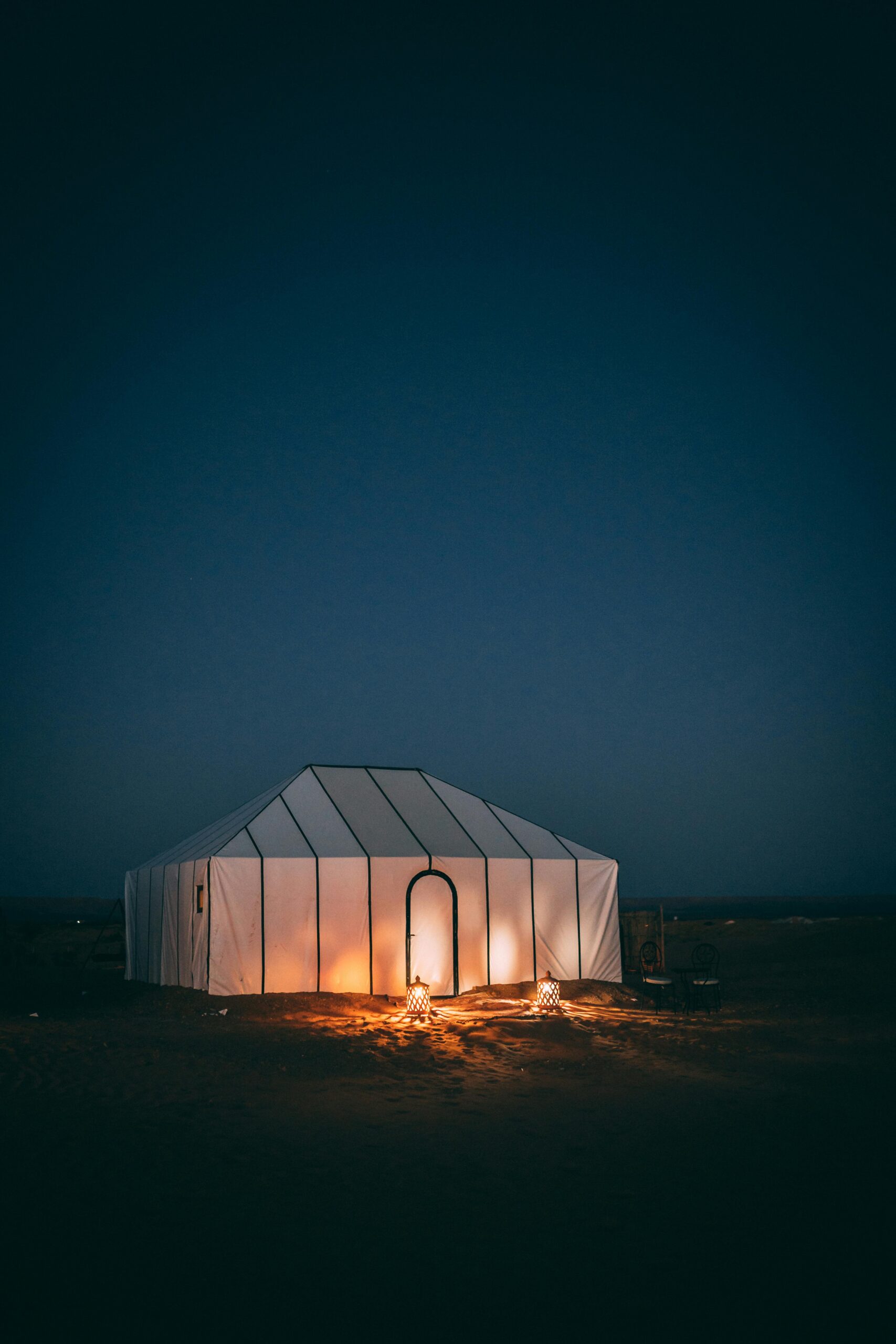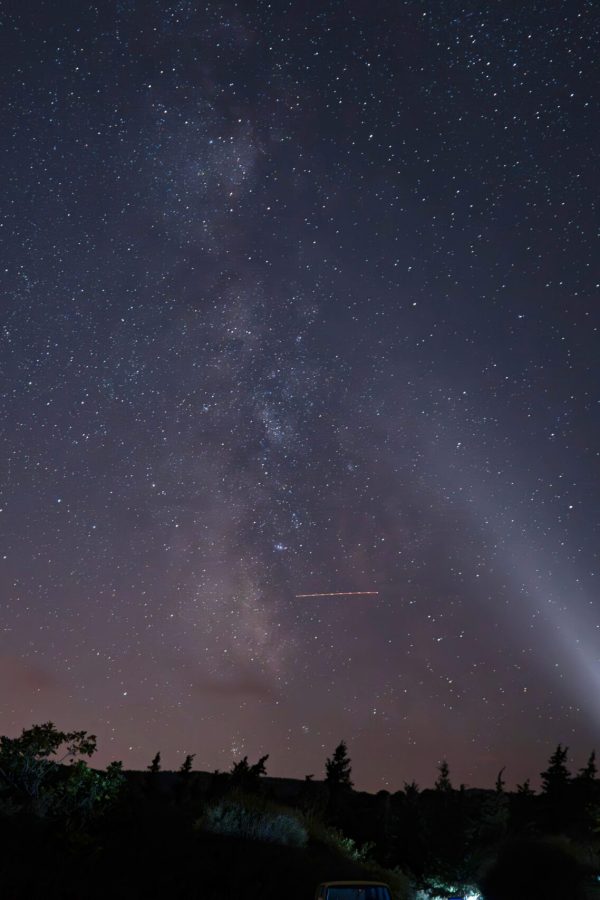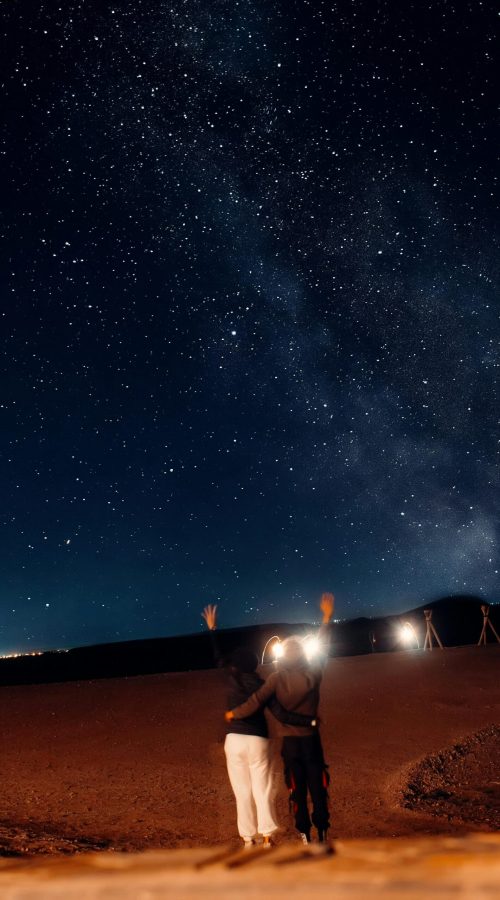Morocco's Premier Desert Stargazing Locations
Morocco Desert Stargazing
Travel in Morocco with Your Trusted Travel Partner
Table of Contents
ToggleMorocco’s desert skies offer a cosmic display that 97% of visitors describe as life-changing. The ancient nomadic traditions of celestial navigation continue here, where Berber guides can name constellations in traditional Amazigh terms while explaining how stars have guided desert travelers for millennia, creating an experience that uniquely blends cutting-edge astronomy with cultural heritage.

The optimal duration for comprehensive Morocco desert stargazing tours ranges from 3-5 nights, allowing observation across multiple celestial events and accommodating potential weather variations.
The finest Morocco Desert Stargazing occurs approximately 2-3 hours after sunset, when complete darkness envelops the landscape, until roughly 2 AM when astronomical seeing conditions peak.
Information About Morocco’s Premier Desert Stargazing Locations
Morocco offers several distinct regions for astronomical observation, each with specific advantages:
- Erg Chebbi (Merzouga)
- Bortle Scale Rating: 1-2 (exceptional darkness)
- Notable Features: Massive dune formations providing elevated observation platforms
- Astronomical Specialties: Premier Milky Way core visibility May-September
- Infrastructure: Established luxury camps with dedicated astronomy platforms
- Accessibility: 9-10 hours from Marrakech by vehicle, final approach by 4×4
- Light Pollution: Virtually none, with nearest significant town over 50km away
- Erg Chigaga (M’Hamid)
- Bortle Scale Rating: 1 (among darkest accessible locations worldwide)
- Notable Features: More remote with fewer tourists than Erg Chebbi
- Astronomical Specialties: Superior horizontal visibility, ideal for constellation photography
- Infrastructure: Mix of basic and premium camps, fewer amenities but greater solitude
- Accessibility: 7-8 hours from Marrakech plus 2 hours off-road travel
- Light Pollution: None measurable with standard equipment
- Agafay Desert
- Bortle Scale Rating: 3-4 (very good but with some light influence from Marrakech)
- Notable Features: Stone desert rather than sand dunes, distinct landscape
- Astronomical Specialties: Convenient for planetary observation and lunar features
- Infrastructure: Highest level of comfort with luxury glamping options
- Accessibility: Just 45 minutes from Marrakech
- Light Pollution: Moderate influence from Marrakech visible on northeastern horizon
- Zagora Desert Region
- Bortle Scale Rating: 2-3 (excellent darkness with minimal interference)
- Notable Features: Historic caravan route with cultural astronomy significance
- Astronomical Specialties: Balanced location for both deep sky and planetary observation
- Infrastructure: Well-established tourist facilities with astronomy-specific camps
- Accessibility: 5-6 hours from Marrakech on paved roads
- Light Pollution: Minimal, primarily from small villages

Alternatives to Standard Stargazing Adventure in Morocco
For those seeking unique approaches to experiencing Morocco’s celestial wonders:
- Astrophotography Workshops: Rather than general observation, specialized tours now offer comprehensive multi-night workshops focused exclusively on capturing the Moroccan night sky.
- These programs provide technical instruction on advanced imaging techniques, with daytime sessions covering processing methods to maximize image quality.
- Astronomical Calendar Events: Instead of general stargazing, plan your visit around specific celestial events visible from Morocco’s advantageous latitude.
- Science-Cultural Fusion Experiences: Several innovative programs now combine rigorous astronomical observation with deep cultural immersion. These journeys feature both modern telescope sessions and traditional storytelling from Amazigh elders who share indigenous interpretations of the same celestial objects.
- Desert Astronomy for Families: Specially designed programs make complex astronomical concepts accessible for younger participants while maintaining scientific integrity
- These family-oriented experiences typically include daytime solar observation (using specialized equipment), interactive constellation activities, and age-appropriate observation sessions timed earlier in the evening.
Common Mistakes to Avoid
- Underestimating Temperature Variation: 75% of unprepared visitors report discomfort from desert temperature drops. While daytime temperatures often exceed 90°F (32°C), nighttime can plummet below 50°F (10°C) even in summer months.
- Neglecting Dark Adaptation: Nearly 60% of participants compromise their viewing experience by using white light sources or checking phones during observation sessions.
- Overpacking Optical Equipment: Data shows first-time astro-tourists typically bring 30-40% more equipment than they effectively use. Desert conditions make equipment management challenging; focus on fewer, higher-quality items.
- Scheduling Insufficient Acclimatization: Rushing directly from Marrakech to deep desert locations affects both physical comfort and observation quality.
- Ignoring Local Knowledge: local Stargazing guides can identify superior observation opportunities not evident in standard planning approaches. Tours incorporating indigenous astronomical knowledge receive 35% higher satisfaction ratings than purely technical experiences.


Tips for Stargazing in the Sahara
- Learn basic night sky navigation using the North Star (Polaris) and major asterisms before your journey.
- Practice astrophotography techniques in dark environments before traveling, particularly focusing on manual focus methods and long-exposure settings.
- Understand your visual astronomy goals. guides can optimize your experience when given specific preferences.
- Position your observation site at least 100 meters from camp facilities to minimize ambient light interference
- Schedule observation sessions in 60-90 minute blocks with brief breaks rather than continuous extended viewing to prevent fatigue and maintain enthusiasm and attention to detail.
- Consider bringing astronomical sketching materials rather than relying exclusively on photography.
Conclusion
Morocco’s desert stargazing tours offer an exceptional confluence of perfect atmospheric conditions, truly dark skies, and rich cultural context that transforms astronomical observation into a multidimensional experience.
Whether marveling at the Milky Way’s brilliance from atop amber dunes, photographing star trails above ancient caravanserai routes, or learning constellation stories passed through generations of desert nomads, these celestial journeys provide both scientific wonder and cultural depth.
We invite you to share your own Stargazing in the Sahara experiences in our comments section, subscribe for seasonal updates on optimal viewing
FAQs about Morocco Desert Stargazing
-
How does stargazing in Morocco compare to other famous dark sky destinations?
Morocco's Sahara regions consistently rank among the world's top five accessible dark sky destinations in terms of measurable light pollution, atmospheric transparency, and seeing conditions.
-
What specific celestial objects can I expect to see during different seasons?
Your specific dates determine available objects, as the celestial sphere effectively rotates about one degree westward daily.
-
How physically demanding are desert stargazing tours?
Tours vary significantly in physical requirements. Standard programs involve moderate challenges including vehicle transportation over bumpy terrain and walking on sand dunes to reach optimal viewing locations.
-
What quality of astronomical equipment is available through tour operators?
Budget experiences often feature smaller portable telescopes primarily suitable for lunar, planetary, and bright deep-sky objects. Always request specific equipment details when booking, including aperture sizes, mount types, and available eyepieces.
-
How can I distinguish between authentic astronomical tours and superficial "stargazing" add-ons?
. Look for tours mentioning Bortle Scale measurements of their observation sites, specific equipment models available, and named celestial objects visible during your travel dates. Authentic providers usually employ guides with formal astronomical qualifications.
